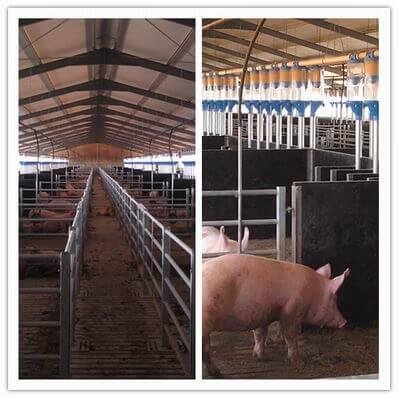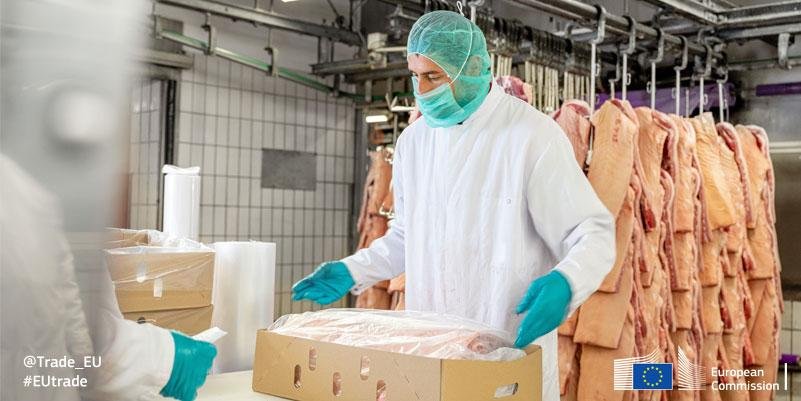U.S. Meat Exports: Navigating Global Expansion
Efforts to lob U.S. meat products into broader global markets have accelerated in recent months, with industry leaders maneuvering through shifting trade winds and evolving demands. The numbers from early 2025, both beef and pork, reflect this ongoing commitment—if not always an identical trajectory.
Exports of beef and pork climbed in March compared to the same period last year. According to USDA data cross-checked by the U.S. Meat Export Federation (USMEF), U.S. companies dispatched 109,330 metric tons of beef—a marginal 1% increase from last year’s figure. In monetary terms, that meat was valued at $922 million for March alone; a sum not seen since the energetic mid-summer surge of June 2024. For pork enthusiasts tracking expansion, volume reached 269,344 metric tons (a subtle nudge up by 3%), tallying $769.7 million in value.
Striving for further expansion presents recurrent complications—tariff barriers loom largest when eyes turn toward China. During March this year China renewed some plant registrations for imported U.S. pork but held firm on steep tariffs that make fresh penetration difficult to sustain at scale. Elsewhere, Mexican demand led growth trajectories while Korea’s appetite regained some vigor after a dormant spell—not so much for Japan though; those exports have experienced a swift decline lately despite general regional steadiness.
The language emerging out of executive ranks can sound optimistic yet tempered with pragmatic undertones:
“Despite a great deal of uncertainty, global demand for U.S. beef remains robust and resilient,” says Dan Halstrom (USMEF President).
Central America seems especially receptive currently—a record level during first quarter reflects robust purchasing willingness there as well as consistent engagement from Taiwan and Mexico.
A crucial aspect is market diversification: American exporters are no longer tethered exclusively to traditional Asian heavyweights or North American partners; new markets in Central America—and even select African countries—add dimension that did not exist with such strength even five years ago. Chile has also surfaced more noticeably among destinations.
However paradoxical it seems at first blush—the sector sometimes imports more than it exports in particular classes. January 2025 data showed $324M worth of bovine meat shipped outward but nearly $521M imported inward within just one month—the economics shift subtly depending on product class and bilateral relationships. South Korea ($88.5M), Mexico ($75M), Japan ($59.6M), Canada ($52.4M), and Chinese Taipei lead as principal buyers recently but erratic circumstances like reduced exports to China (-34%) remind analysts how turbulence arrives without warning.
Oddly enough—with growing international shipments comes narrowing gains domestically in chicken export forecasts: broiler meat is expected by USDA analysts to contract another two percent through this calendar window following an earlier seven percent stumble. Perhaps chicken will fly highest once these larger macroeconomic ripples smooth themselves out again or consumer habits globally mutate—as they often do—with little notice.
Somewhat under-discussed is lamb’s minor yet persistent rise piggybacking alongside its red-meat brethren thanks mostly to niche culinary trends abroad rather than mainstream menu shifts homeward. Also notable are the sometimes-overlooked secondary revenue streams created from offal cuts fueling surprising markets abroad—a fact less well-known outside circles attuned closely with carcass utilization percentages.
Competitive jostling becomes fierce when considered against Brazilian or Australian supply chains who flood Southeast Asia or Middle Eastern ports during favorable quota windows—it’s anything but straightforward math determining how much shelf space ultimately belongs to Nebraska striploin over Argentine flank steak.
To broaden perspective – livestock producers now consider analytics like per-capita protein consumption across new demographics almost as significant as negotiation sessions involving updated plant codes or logistics partners equipped for cold-chain integrity stretching thousands of nautical miles between Gulf Coast facilities and Vietnamese retail shelves.
One would think stabilizing currency swings helps all parties involved reconcile invoices amicably—but then again, sudden regulatory pivots regarding animal tracing explode these neat calculations now and then unpredictably.
Contrastingly—for every destination surging upward such as Colombia setting its second-largest record ever receiving American pork, another like Japan quietly pares expectations downwards without fuss; elsewhere still Canada oscillates month-to-month influenced by broader NAFTA sensibilities layered on top old-fashioned regional flavor preferences.
Approaching mid-2025—the chessboard appears crowded yet ripe: if current patterns hold steady save the anticipated headwind patches predicted against Chinese tariffs expiring plant licenses, exporters should expect their bottom lines buoyant though occasionally punctuated by odd reversals so reminiscent you’d wonder whether someone let Murphy’s Law write tariff schedules herself one foggy Monday morning.
Within such inconsistent groundswell lies genuine opportunity—and authentic risk—in equal measure perhaps best understood less through spreadsheets alone than those familiar stories among ranchers about six ways cattle can break loose before dawn only four ever happening before breakfast bell rings somewhere south of Amarillo.









